Synesthesia
A Brief History of Synesthesia in the Arts
In ancient China, one of the various schemes relating such matters as seasons of the year, body parts, facial features, and planets, contained the following:
Taste Color Tone Number Planet
sour green and blue jué 3 Jupiter
bitter red zhiv 5 Mars
sweet yellow go'ng 3 Saturn
sharp white sha'ng 2 Venus
salty black yú Mercury
(based upon Jewanski 1999: 70, which is based upon Wang 1984/1985)
An ancient Persian scheme provides the following correspondences between musical tones and colors:
B rose
A green
G bright blue
F black
E yellow
D violet
C blue-black
(based upon Jewanski 1999: 70, which is based upon Wellek 1927 )
Around the year 550 B.C., the Pythagorans offered mathematical equations for the musical scales, showing that musical notes could be seen as relationships between numbers. A musical scale, for example, could be divided into eight notes, an "octave" scale, which repeats its sequence as the musical notes proceeded higher or lower. To use a basic example, this could be the C-Major scale on the piano, consisting of just the white keys: C-D-E-F-G-A-B-C. This is also the basic "do-re-mi-fa-so-la-ti-do".
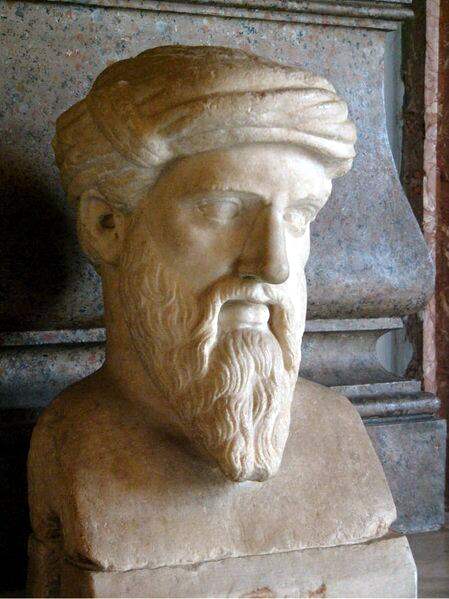
Pythagoras

Plato
Around 370 B.C. or so, Plato wrote Timaeus, in which the soul of the world is described as having these same musical ratios. A cosmology was emerging in which the planets' radii (the planets' order actually varied, depending upon the author) were set with a ratio sequence of 1:2:3:4:8:9. Later, ratios would emerge with the following ratio sequence: Moon = 1; Venus = 2; Earth = 3; Mars = 4; Jupiter = 14; Saturn = 25. This sequence approximated the Greek diatonic musical scale's ratios, thus the planets were tied to music, and a concept of "the music of the spheres" was initiated.
Around 350 B.C., Aristotle wrote to maintain that the harmony of colors were like the harmony of sounds. This set the stage for a later equating of specific light and sound frequencies, as Aristotle's works were translated and incorporated into European sciences.

Aristotle
Aristotle, in his On Sense and the Sensible (350 B.C.), also established a correspondence between flavors and colors, as follows (see also Riccò 1999: 29; Jewanski 1999: 84):
Flavor
sweet
fat
tangy
sour
sharp
salty
bitter
Color
white
yellow
purple-red
violet
green
blue
black

Archytas
At about this same time, Archytas of Tarentus (c. 428 - 350 B.C.) introduced the "chromatic" scale to Greece. This was seen as a compliment to the two main scales: the diatonic (a whole-note or full-tone scale); and the enharmonic (quarter-tones).
In the latter half of the eleventh century, Rudolph of St Trond "sought to introduce a notational system which represented the modes (tropoi) of plainsong - which he mistakenly identified with the ancient Greek modes - by colours; thus the Dorian was to be written in red, the Phrygian in green, the Lydian in yellow and the Mixolydian in purple. This system, which was designed simply for clarity, found little echo even in the manuscripts of Rudolph's own work" (Gage 1993: 228).
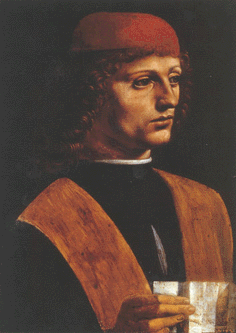
Around 1492, Franchino Gaffurio was re-introducing colorized Greek modal music to Europe, with the following system: Dorian = "crystaline" color; Phrygian = orange; Lydian = red; and Mixolydian = an "undefined mixed color" (which is, admittedly, somewhat vague).
In 1517, a lute manuscript was produced which had note-duration notated via color: an 8th note = red; a 16th note = blue; a 32nd = yellow/green.
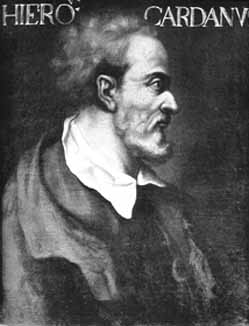
In 1550, Girolamo Cardanus (also known as Cardano) developed a system of corresponding colors with flavors and the planets:
white
yellow
red
(puniceus)
purple (purpureus)
green
blue
black
sweet
harsh/pungent
(austerus)
tart
sour
sharp
(acutus)
salty
bitter
Venus
Jupiter
Moon
Mercury
Sun
Mars
Saturn
By 1570, Cardanus had altered his system slightly, and now added correspondences to tone intervals:
Venus
Sun
Mercury
Jupiter
Mars
Saturn
Moon
sweet
pungent (acris)
sour
fatty (pinguis)
salty
astringent
tasteless
octave
major sixth
minor sixth
fifth
fourth
major third
minor third

Guiseppe Arcimboldo
Around 1590, the painter Guisppe Arcimboli created a system of colored fabrics, such that pointing to specific swaths would designate specific notes for musicians to play. An interesting aspect of Arcimboldo’s system is that the lowest notes are indicated by white and lighter colors, and higher notes are progressively darker.
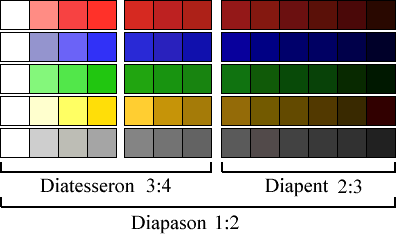
Arcimboldo's musical color board reconstructed by D. Pavey

In 1618, Johannes Kepler's Harmonices mundi ("Harmonies of the World") was published. Here, each planet was not only given an individual basic note but was also actually given a sequence of musical notes based upon its movements -- not enough for a full "melody", really, but at least enough for a "motif".

Athanasius Kircher, around 1646, developed a system of correspondences between musical intervals and colors, as follows (see Jewanski 1999: 200-205):
octave
seventh
major sixth
minor sixth
augmented fifth
fifth
diminished fifth
fourth
major third
minor third
major wholetone
minor second
minor wholetone
green
blue-violet
fire red
red-violet
dark brown
gold
blue
brown-yellow
bright red
gold
black
white
grey
Kircher also developed a set of correspondences between voice types and colors (based upon Jewanski 1999: 215-216):
high, soft and broken
soft and quiet
deep and unclear
high and tense
first deep, then high
strong and deep
white
yellow
fire-red
scarlet
blue
black
Marin Cureau de la Chambre, in 1650, proposed a scheme of colored musical intervals based on Aristotle (see Jewanski 1999: 222-226):
double-octave
twelfth
eleventh
octave
fifth
fourth
base
black
purple
blue
green
red
yellow
white

In 1704, Sir Isaac Newton's treatise Optics was first published, which dealt, among other things, with the parallel between colors of the spectrum and notes of the musical scale. Newton mathematically but quite arbitrarily divided the visible light spectrum into seven colors. He then noted that the mathematical relationships of these seven colors was similar to those of the musical scale, with the following concordances:
violet = eighth (octave)
indigo = seventh
blue = major sixth
green = fifth
yellow = fourth
orange = minor third
red = tonic
In 1723, David Gottlob Diez produced a system corresponding colors, planets, and musical tones (see Jewanski 1999: 144-146):
black
grey
red
yellow
green
various colors
blue
water-blue/white
Saturn
Jupiter
Mars
Sun
Venus
Mercury
Moon
Earth
A
Bb
B
C
C#
D
D#
E
F
F#
G
G#
In 1739, Lorenz Christoph Mizler (1711-1778) developed his sceme for colored musical notes, in response to Newton:
B
A
G
F
E
D
C
violet
indigo
blue
green
yellow
orange
red
Note that this is seven colors, arranged as per the supposed "spectrum" (see Jewanski 1999: 466-468).
The French Jesuit monk Louis Bertrand Castel, the well-known mathematician and physicist, was a firm advocate of there being direct solid relationships between the seven colors and the seven units of the scale, as per Newton's Optics. Around 1742, Castel proposed the construction of a clavecin oculaire, a light-organ, as a new musical instrument which would simultaneously produce both sound and the "correct" associated color for each note.
Relationships between sounds and colors according to L.B. Castel:
B
Bb
A
Ab
G
F#
F
E
Eb
D
C#
C
(dark) violet
agate
violet
crimson
red
orange
golden yellow
yellow
olive green
green
pale green
blue
(see Jewanski 1999)
Johann Gottlob Krüger, in 1743, variated Newton's scheme, producing the following variation:
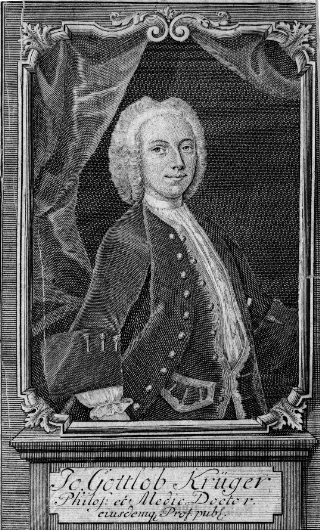
B
A
G
F
E
D
C
violet
purple
sky blue
green
sulfur yellow
golden yellow
red
Polycarp Poncelet, in 1755, combined musical tones with basic taste sensations, in the following scheme:
B
A
G
F
E
D
C
piquant
sharp, tangy
sweet-sour
bitter
sweet
without taste; boring
sour
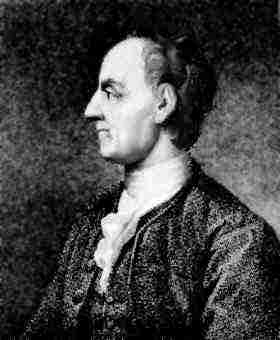
The mathematician Leonhard Euler (1707-1783) developed the following system of correspondences between colors and musical notes around 1760:
B
A
G
F
E
D
C
violet
blue
green
yellow
orange
red
purple
Note the difference here between Euler's C = purple starting point and previous C = red starting points of Krüger, Mizler, and Newton. It should be noted, however, that Euler basically rejected the idea of a natural realationship between light and sound, and dismissed Castel's idea of a clavecin oculaire.
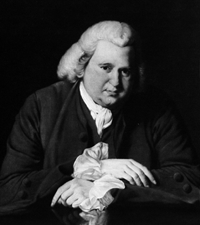
In 1789, Erasmus Darwin, the grandfather of naturalist Charles Darwin, stated the following in his The Botanic Garden, Part II:
"Now as the pleasure we receive from the sensation of melodious notes [. . .] must arise from our hearing some proportions of sounds after others more easily, distinctly, or agreeably; and as there is a coincidence between the proportions of the primary colours, and the primary sounds, if they may be so called [. . .] the same laws must govern the sensations of both.
"In this circumstance therefor consists the sisterhood of Music and Painting: and hence they claim a right to borrow metaphors from each other, musicians to speak of the brilliancy of sounds, and the light and shape of a concerto; and Painters of the harmony of colours, and the tone of a picture. Thus it was not quite so absurd, as we imagine, when the blind man asked, if the colour scarlet was like the sound of a trumpet" (Darwin 1789/1991: 129; quoted in Jewanski 1999: 510).
Also in 1789, Louis-François-Henri Lefébure modified Castel's scheme of colored musical notes, changing it to the following:
B
A
G
F
E
D
C
violet
orange
yellow
indigo
red
green
blue
(see Jewanski 1999: 401-403)
In 1862, François Sudre died, leaving behind him the invention of Solresol, a "Universal Language" based upon seven musical pitches (do, re, mi, fa, sol, la, si -- with "middle C" set as "do). Sudre suggested that one system for encoding Solresol could employ fires or lanterns using the following sequence:

si = B
la = A
sol = G
fa = F
mi = E
re = D
do = C
violet
indigo
blue
green
yellow
orange
red
In 1893, Bainbridge Bishop published regarding his scheme of correspondences for colored notes, which he deemed as being correct according to nature as displayed by rainbows (see Bishop 1893):
B
Bb
A
G#
G
F#
F
E
Eb
D
C#
C
violet-red
violet
violet-blue
blue
green-blue
green
yellow-green
green-gold / yellow
yellow-orange
orange
orange-red
red
By this time, Bishop had already constructed at least three color organs, capable of playing both sound and corresponding light together or separately. Perhaps surprisingly, the three color organs were each destroyed in separate fires. The first color organ was exhibited in New York; it was this same organ which was later owned and displayed by P.T. Barnum at Barnum's house in Bridgeport (and subsequently ruined when the house burned down). The second was destroyed in a hotel fire at Lake George; the third, at during a fire at Bishop's own house.

In 1922, in Russia, Leon Theremin invented an "illumovox" to accompany his "etherphone" (theremin), which, "when connected to the etherphone, projected evolving hues of the spectrum in direct correspondence to pitch changes on the instrument" (Glinsky 2000: 31-32); these correspondences were apparently just straightforward, with the lowest pitches as dark red, then successively higher pitches moving through orange, yellow, green, and so on, up to the highest pitches being almost ultraviolet. Theremin later added gadgets to also add scents and tactile sensations to the instrument's music (see Galeyev 1992).
Thissite last updated: 5.July.2011